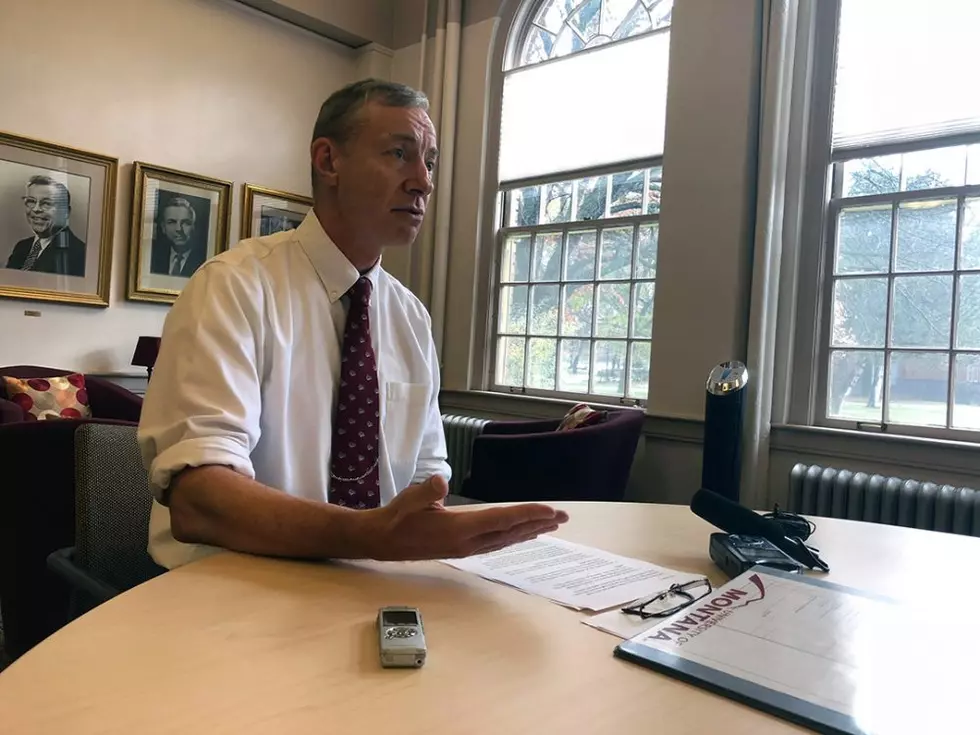
UM releases next steps in staffing, budget targets with cost reductions in mind
University of Montana Provost Jon Harbor on Wednesday announced the next steps in implementing the instructional staffing budget targets for the university, resulting in about $5 million in savings by 2021.
The instructional budget target for 2021 is projected to be about $33 million, down from the current budget of $38 million.
A week ago, all colleges and schools within the university submitted plans that met staffing budget targets. Details include confidential information about faculty and are a work in progress and cannot be released, Harbor said.
The budget targets include reductions in faculty in some areas with additions in others. Voluntary retirements, as well as some faculty moving to part-time positions, will help with budgets, Harbor said, with a reduction of about 58 full-time faculty members by fall of 2021.
That’s about 12 percent of the full-time equivalent, or FTE, workforce, Harbor said. However, new faculty members will be hired in response to student need in the future.
“We will be offering the programs that over 98 percent of students want, but with fewer FTE than today. Even after these changes, we’ll be investing 14 percent more dollars per student credit hours in instruction than in 2009 to (2013),” Harbor said.
Current student-to-faculty ratios for each department was determined using the five-year period from 2009 to 2013 as a benchmark. Student credit hour to faculty ratios from this time period were applied against 2018 enrollment data, resulting in what Harbor described as the presumptive instructional budget.
Plans also include reducing the number of general education courses and the number and frequency of elective courses. Increasing some class sizes and combining class sections will also be a reality, while some faculty will take on more teaching responsibilities.
“The University of Montana has a smaller student body than it did several years ago, and these plans will align our instructional staffing to our student needs and interests, and continue our tradition in providing amazing educational experiences and outcomes for our students,” Harbor said.
Specific reductions within departments include ending the Global Humanities and Religions major and minors, and consolidating six current majors within the Modern and Classical Languages and Literatures into one World Languages and Cultures major with language options.
Suspending the Ph.D program in materials science within the College of Health Professions and Biomedical Sciences and hiring new tenure-track faculty in English, psychology, media arts and counselor education are also on the agenda.
About 16 majors, minors and options will be changed, Harbor said.
“These are changes. These are things that have less student interest so, either they’re being discontinued or they’re being changed in a way that is more appropriate for the number of students that are interested,” Harbor said.
Just under 2 percent of the university’s students have a declared major, minor or concentration in the few programs planned to be cut in the future, Harbor said. Those students can finish their degrees but UM will no longer accept new students into those programs.
With the instructional budget, the university plans to save about $9 million in the academic budget. With a goal to save $5 million, Harbor said that the rest will be used for strategic investment.
Programs receiving strategic investments were decided by data collected through campus input and academic recommendations. Investments will be allocated to programs like the College of Humanities and Sciences, College of Visual and Performing Arts and the College of Business.
While individual department plans are still a work in progress, all fell well within the instructional budget targets set by President Seth Bodnar and the provost. Harbor said some departments have goals they want to achieve, and that may include some marginal flexibility when it comes to the budget targets.
With reductions and changes come opportunities, he said, like expanding summer sessions and online classes which can bring in more revenue and allow students to study away from campus.
“One of the things that has excited me in this planning process, a number of departments or faculty that have been excited about moving in new directions. This planning process has allowed them to say, ‘Well this is what we’d like to do,’” Harbor said.
In a letter to students about the budget, the provost emphasized transparency and keeping the campus updated in the months to come.
“I will continue to share updates regarding key decisions or milestones in this process as we move forward. As we place student success at the center of all we do, a number of exciting new initiatives for students are on the rise -- this is a great time to be a student at the University of Montana.”
